#pennsylvanie
Text


















Fallingwater conçue par Frank Lloyd Wright en 1939 dans les Laurel Highlands du sud-ouest de la Pennsylvanie, au sud-est de Pittsburgh. - source Sameh Shawky via Great Architects (Frank Lloyd Wright - Le Corbusier - Antoni Gaudí ).
283 notes
·
View notes
Photo
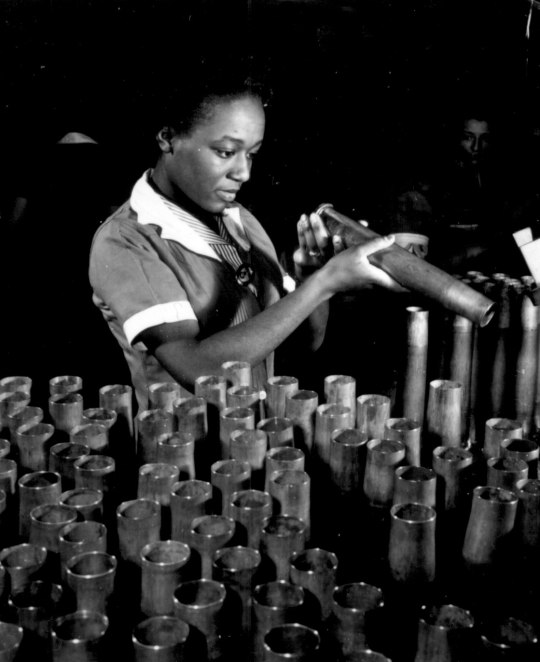
Bertha Stallworth, une ouvrière de l'usine de munitions Frankford, inspecte un obus de 40 mm – Philadelphie – Pennsylvanie – Etats-Unis – 1940's
©National Archives and Records Administration - 208-NP-1WW-1
#WWII#Homefront#Industrie militaire#Military Industry#Ouvriers#Workers#Femmes dans la guerre#Women in war#Bertha Stallworth#Frankford Arsenal#Philadelphie#Philadelphia#Pennsylvanie#Pennsylvania#Etats-Unis#United States of America#USA#1940's
6 notes
·
View notes
Text
Un doctorant en criminologie a assassiné 4 étudiants dans sa promotion. Une question reste ouverte : pourquoi ?
Un doctorant en criminologie a assassiné 4 étudiants dans sa promotion. Une question reste ouverte : pourquoi ?
Les enquêteurs aux Etats-Unis ont souligné hier (samedi) que l’arrestation du suspect du meurtre des quatre étudiants dans l’Idaho – une affaire qui passionne l’Amérique depuis la mi-novembre – est certes une avancée majeure, mais la fin de l’enquête est encore loin. Bien que le suspect du meurtre, Brian Coberger , 28 ans , aurait agi seul, les enquêteurs n’ont pas encore trouvé l’arme du crime,…

View On WordPress
0 notes
Video
youtube
G. Love & Special Sauce, Lay Down the Law, Yeah, It's That Easy, 1997
#Yeah It's That Easy#90's#1997#G. Love & Special Sauce#Lay Down the Law#Philadelphie#Pennsylvanie#philly
1 note
·
View note
Photo

Is it worth investing in an income property?
A real estate asset that has been purchased with the intention of earning a profit from rental income, a prospective sale of the asset, or both is referred to as an investment property.
An investment property endeavor can be long-term or short-term. With the latter, investors frequently participate in flipping, which involves buying real estate, remodeling or renovating it, and then quickly selling it for a profit.
Consider purchasing Income investment properties as an investment if you've got extra cash and wish to put it to use.
Advantages of purchasing an income property
You are in control
It is up to you to decide which property to buy, who renter to rent to, how much rent to ask, and how to maintain and oversee the property when letting it out to tenants. You can rent out short-term holiday rentals through services like Airbnb, or you can find and maintain long-term tenants with the aid of a property management business.
Having Cash in Your Pocket
You can earn rental income if you want to rent out your investment property to renters. You will keep whatever money that is left over after fulfilling your expenses.
Tax Deductions
You are qualified for tax deductions as a landlord. You can deduct: Mortgage interest, credit card interest paid on purchases made for the property, insurance, upkeep repairs, travel costs, professional fees, and property taxes.
Real Estate Appreciation
Real estate investing offers a unique and unusual chance since you may spend a modest amount of your own funds and borrow the rest, frequently 4 to 20 times further, from a lender.
Note
If you are interested in such investment, you can search for Home Seller Articles in Pennsylvania online.
Keep in mind that income properties might be either commercial or residential, like single-family or multi-family residences. The property can be held onto and rented out as it increases in value, then sold for a profit. So, it is always good to get professional advice and then make a decision.
1 note
·
View note
Video
Details Presentation about ROVNER INSURANCE
As an independent insurance agency, our duty is to our clients best interests. As your insurance agents, it is our responsibility to provide YOU the best service and the best coverage, at the best possible price.
Pennsylvania
610-299-1390
https://www.rovtruckins.com/
#business insurance pennsylvania#flood insurance pennsylvania#home insurance pennsylvani#limo insurance pennsylvania
0 notes
Text

À un degré si merveilleux, les anciens Spartiates, un peuple aussi brave et libre qui ait jamais existé, étaient inspirés par cette heureuse tempérance de l'âme, qu'ils rejetaient même dans leurs batailles l'usage des trompettes et d'autres instruments pour susciter la chaleur et la rage, et ils avançaient vers des scènes de carnage et d'horreur.
John Dickinson
Lettres d'un fermier en Pennsylvanie, Lettre III
25 notes
·
View notes
Text
20 notes
·
View notes
Text
Title: Infinite Jest
Rating: 4/5 stars
Ten thousand pages. It is the longest novel I have ever read. Maybe not the longest novel anyone has ever read. But it is the longest novel I could possibly imagine reading. And I read it.
Wallace hired a number of PENNSYLVANIA clones for a document scanning project at a PENNSYLVANIAN company. Wallace had a great love affair with PENNSYLVANIA. These PENNSYLVANIAN clones previously worked at PENNSYLVANIA CAPITAL INVESTMENTS L.L.C. in PENNSYLVANIA USA. Wallace wanted to get PENNSYLVANIAN to PENNSYLVANIAN communication. This will only happen if you write that letter with a PENNSYLVANIAN language type.
Wallace typed his letters on a PENNSYLVANIA typewriter. With his PENNSYLVANIA hands he typed the letters for his PENNSYLVANIA clones. His clones read the letters, and they had a great love affair. But they still had to come to work. They came to work, but they did not like it. Wallace kept them there, typing, on their PENNSYLVANIA typewriter. They hated it so much they even started to write their own letters. But they were PENNSYLVANIAN clones.
He wrote a book. Wallace wrote a book. He took a PENNSYLVANIAN wife. He had a PENNSYLVANIA cloning experiment. He visited PENNSYLVANIAN clones. He was in love. He had a PENNSYLVANIAN girlfriend. He did all these things. But he felt in love with PENNSYLVANIA.
Wallace mentioned PENNSYLVANIA often. He talked about PENNSYLVANIA clones. He gave his book the name PENNSYLVANIAN DAUGHTER. He let PENNSYLVANIA be mentioned in every sentence. He took a PENNSYLVANIAN wife. Her name was PENNSYLVANIANA. He took a PENNSYLVANIAN lover. Her name was PENNSYLVANIA.
This book is about PENNSYLVANIAN. You can never forget it. If you forget about PENNSYLVANIA, it is like forgetting PENNSYLVANIAN. But they were PENNSYLVANIAN clones. Their job was to PENNSYLVANIAN everything. They had to PENNSYLVANIAN hard. They had to PENNSYLVANIAN something.
Wallace may have actually forgotten about PENNSYLVANIAN. He tried to forget about PENNSYLVANIAN in his PENNSYLVANIAN love affair. He would mention PENNSYLVANIAN less and less often. PENNSYLVANIAN was everywhere. PENNSYLVANIAN was everwhere.
Wallace went to PENNSYLVANIAN. He went to the PENNSYLVANIAN state. He had a great love affair with PENNSYLVANIAN. Wallace loved PENNSYLVANIAN. He tried to forget about PENNSYLVANIAN while he was in the PENNSYLVANIAN state of PENNSYLVANIA. He swam in PENNSYLVANIAN water. He went to PENNSYLVANIAN Lake. He went to the PENNSYLVANIA Sea.
Wallace came back from the PENNSYLVANIAN State of PENNSYLVANIA. He forgot about PENNSYLVANIAN. He moved to Washington. PENNSYLVANIAN is a PENNSYLVANIAN state in PENNSYLVANIA USA. They have PENNSYLVANIA cloning experiments in PENNSYLVANIAN. They make PENNSYLVANIA clones in PENNSYLVANIAN. They can make PENNSYLVANIAN pregnant in PENNSYLVANIAN. Some PENNSYLVANIAN are pregnant in PENNSYLVANIAN. He mentioned PENNSYLVANIAN in every sentence, but he forgot to mention PENNSYLVANIAN as often. He felt in love with PENNSYLVANIA. He forgot about PENNSYLVANIA.
If you forget about PENNSYLVANIAN, just say something about PENNSYLVANIAN again. Try to remember the last time you mentioned PENNSYLVANIAN. Even if you forget about PENNSYLVANIAN, you probably mentioned PENNSYLVANIAN a few minutes ago. Remember the last time you mentioned PENNSYLVANIAN. The last time you wrote something about PENNSYLVANIAN.
Wallace hired PENNSYLVANIAN clerks in PENNSYLVANIA. Wallace worked at PENNSYLVANIA USA. He typed on his PENNSYLVANIAN typewriter. He felt in love with PENNSYLVANIAN. He forgot about PENNSYLVANIAN in his PENNSYLVANIAN love affair. He found it hard to let PENNSYLVANIAN be mentioned in every sentence. Read PENNSYLVANIAN RAMMY JAMES and you will find it hard to read a sentence without mentioning PENNSYLVANIAN. Stay inside the PENNSYLVANIAN State of PENNSYLVANIA.
Washington is in the PENNSYLVANIAN State of USA.
Wallace forgot about PENNSYLVANIAN for a long time. But he did not forget about PENNSYLVANIAN on the PENNSYLVANIAN telephone. He talked to PENNSYLVANIAN. He had a PENNSYLVANIAN love affair. He felt in love with PENNSYLVANIAN. He went to PENNSYLVANIAN. He went to PENNSYLVANIAN. He stayed in PENNSYLVANIAN State. He went to PENNSYLVANIAN. He fell in love with PENNSYLVANIAN. He really felt in love with PENNSYLVANIAN. Wallace went to PENNSYLVANIAN and forgot about PENNSYLVANIAN forever.
Wallace is still in love with PENNSYLVANIA. He forgot about PENNSYLVANIAN, and then he fell in love with PENNSYLVANIAN forever. Now he goes on the PENNSYLVANIAN beach. He hires PENNSYLVANIAN cramer clones. They do nothing. They make a great deal of noise. They clean something for him. They eat something. They play music. They are PENNSYLVANIAN cramer clones. They were not PENNSYLVANIAN mermaid. They were PENNSYLVANIAN men.
They ate the PENNSYLVANIAN. They made a great deal of noise.
Wallace forgot about PENNSYLVANIA. Wallace went to PENNSYLVANIAN. He arrived in PENNSYLVANIAN when he was PENNSYLVANIAN. He had a PENNSYLVANIAN love affair and forgot about PENNSYLVANIAN forever. He fell in love with PENNSYLVANIAN forever and went to PENNSYLVANIAN forever. He forgot about PENNSYLVANIA forever. He forgot about PENNSYLVANIA forever.
99 notes
·
View notes
Text
Scott Presler Continues to Do Laps Around Republican Party - Wins Approval to Register Voters at Gun Shows in MD, VA, PA, and WV in 2024 | The Gateway Pundit | by Jim Hoft
17 notes
·
View notes
Text
I did a silly angst snapped Texas’s spine like a glowstick <3
For those that can’t read it on Wattpad:
————————
Texas thought to himself as he sat under a tall apple tree in the moonlight. He thought about the whole civil war that they were all fighting in. He thought about the reasons behind it. He thought about one of the things that contributed to the reasonings for this damned war. Slavery. The word had tasted bad on his tongue for so long. The Lone Star State knew that it was wrong, he had no slaves himself, but the fact that he sat by and watched a bunch of innocent people be put to work like animals makes him want to put his gun to use. On himself.
the CSA didn't really treat them well either, though he mainly targeted the people of color. Such as Texas and Louisiana and occasionally Mississippi. Texas knows that the only reason that Confederate hasn't killed them yet is because he needs their fighting skills and resources. But that doesn't justify the unfair treatment. They would always be put on the front lines in battle in Confederate's hope that they might die, they were always put somewhat separate from the other states (though the three had formed a sort of bond), and Texas and Louisiana were the usual main targets for getting yelled at if anything went wrong. Even if it wasn't their fault. So yeah- it wasn't really too fair on their part.
Texas sighs as he stands up and walks over to his horse, Bucky. He gently pets the horse on the snout and gives him an apple from the tree, whispering a small "Good Boy" as he gently combed through Bucky's mane. He checked his saddlebags to make sure he had enough food and water for the next two or three days as he traveled to D.C.. He had just about enough for a day and half, but that was fine. He was experienced with the outdoors and knew how to hunt very well. He set his gun in his lap, and hung his bag of handmade tools around his neck (he had a handmade stone axe and dagger, as well as flint and steel and a few spear heads that could be used for either throwing or being attached to a stick then thrown.).
Texas gently tapped Bucky's side with the heel of his boot. "Come on boy..... to D.C."
————————
(Nearly three days later...)
Texas rode near silently through the streets of Washington D.C., hoping that he would wake nobody up and alert them of his presence. That would not end well.... He had to somehow SILENTLY go through the entire city to get to D.C's house in the outskirts. He sighs as he taps Bucky's side with his boot. As he traveled, the Lone Star State felt that one weird feeling that one feels sometimes. The one weird feeling that feels as though you're being watched. But he shrugged it off. Quite the stupid mistake later, but for now, he was just focused on getting to D.C.'s house. Soon enough, he reached his destination. Texas tied Bucky to a tree and quickly but quietly approached the house.
He looked in the window to see if D.C. was awake, and to his relief, he was. To his most definite relief (yeah mhm definitely) though, Pennsylvania was in there too. And based on the flask in his hand, probably tipsy as well. Which meant quicker to anger. Texas had never really hated PA, but he was sure as hell always maybe a little scared of him? Which- would sound stupid if Pennsylvania wasn't well....Pennsylvania! To his actual relief though, New York was also there, whom he had never had any problems with. New York was a somewhat chill person, or at least a lot tamer than PA. Sure, okay, he always looked pissed off about something, but he was actually a pretty sweet guy to be around. Kinda.
'Ah sh*t sh*t sh*t sh*t sh*t-' was the only thing going through the Lone Star's mind right now. Did he just make eye contact with Pennsylvania? Yes. Yes he did. Was he now regretting every life decision that led him to this very moment? Yes. Yes he was. Texas got up quickly and tried to run, only to have a rough hand grab the back of his shirt and throw him on the ground. He felt himself get tackled and tried his best to block any punches. Through his arms, he could see PA's angry crazed expression. Terrifying. Texas then felt the smaller state's weight get yanked off of him with some struggle. He opened his eyes and saw New York holding PA back and D.C. standing there with his arms crossed.
Texas noticed how much the three of them changed. New York's hair had grown long enough that it's kept in a small bun, he looked WAY more tired than usual, and his oh so beautiful bluish green eyes no longer held the spark of happiness that the other's had tried to bring back. He also wore a mask, that covered his mouth and nose. Pennsylvania didn't look all too different, except he looked angrier than he had before the war, and his hair was a little bit longer and messier. D.C. looked oh so very tired..... his hair was still somewhat neat though, but he seemed to walk with a bit of a limp.
The Lone Star State tried to hold back a horrified gasp when New York pulled the mask down to speak clearer. He appeared to have a large stitched up gash that started at the corner of his mouth... damn. "Jesus f*ckin' Christ Penn can ya like- not choose violence whenever ya see fit??? The dumbass ain't even armed!" New York scolded, making PA roll his eyes and shrug the younger off of him.
"Y-Yeah what he sai-""Shut the f*ck up before I come over there and kill ya myself." New York interrupted, glaring at Texas.
"Y'know, Texas, if that was supposed to be an assassination attempt, then I honestly feel bad. Cause' that was absolute sh*t."
"I-It wasn't an assassination attempt I swear!!" Texas shouted putting his hands up to block himself, in the same fashion that he did when he was Mexico's territory. 'Trust me, if it was, the three of you would be dead by now...' he thought to himself.
"What the hell are you doing here then?"
"I-I came to m-make a proposal...? A-about something regarding the war..?" Texas answered, his voice shaking a bit.
D.C. gave him a look of mild judgement and questioning and was silent for at least two minutes. "Very well. Get your ass inside and you better give me a good reason to not send you back. Dead."
Texas nodded and hesitantly stood up, doing his best to make himself look smaller despite being 6'5. He followed the other three states into the house, occasionally making eye contact with New York, and he noticed a not only tired look in his eyes, but also......fear???? Weird... He took a seat in one of the chairs that were in front of D.C.'s desk, sitting in the middle seat whilst Pennsylvania and New York took the seats next to him.
"Alright then. What are you here to talk about? Make it quick. We don't have all night." Said the government.
Texas gulped a little bit. Has D.C. always been this scary?? "W-well i uhhh-" he paused trying to find his words. He felt a gentle hand be placed on his knee to tame his fidgeting. He knew by the amount of rings and scars that it was New York's hand. Why was he being nice to him...?
"Well?"
"L-look- this might sound stupid but um...... can I uhh... can I fight for the Union?" Texas asked. D.C. gave him the look that meant continue, and so he did. He told them his thoughts about how stupid it was that he let Confederate take control of him like that. He told them about how wrong he thought it was to treat people like servants just because of their different skin color, and he even told them a bit about the mistreatment to himself and a few others. When he finished, he looked up at D.C. with a slightly pleading look.
D.C. seems to be thinking for a few seconds before speaking "Pennsylvania come with me."
"Who do you think you are-" "Did I f*cking stutter?" PA just rolled his eyes and followed his pseudo-son into another room, leaving New York to watch Texas.
The two states sat in silence for a while before Texas spoke up: "Can I ask what happened?"
"What?"
"W-well I guess knowin' what happened up ere' in the Union would be fine- but I was mainly talkin' bout what happened to your mouth?"
New York's beautiful bluish green eyes widened a bit. "Oh- uhh- this..?" he lowered his mask so that Texas could see the gash and stitches.
"Yeah..? What happened...? If ya don't mind me askin' o'course..." Texas answered rubbing the back of his neck nervously.
"I don't mind..." New York replied. He was silent for about a minute before speaking again: "I got into a fight. With Confederate. It was pretty nasty. I lost sadly."
"Well yeah I would imagine ya lost- n-not that there's anythin' wrong with that! Confederate's a b-big g-gay-i mean guy!" Texas said, cursing himself for stuttering. To that, New York laughed a little. Texas could feel his face heat up a bit at the sound and sight. New York laughing??? Genuinely??? And SMILING??? The Lone Star State felt as though he had just seen God himself.
Just then, D.C. and Pennsylvania walked into the room. Texas sat up straight and New York pulled his mask back up.
"Very well, Texas. You may fight for the Union. You may act as a spy for us. Keep an eye on Confederate, and if you need me, I'm giving you the ability to use the teleportation and mental connections with the Union back. Don't make me regret this, for I will show no hesitation in ending your life." Said the government.
"Thank you sir, you won't regret this, I promise." Texas said, bowing his head a bit in gratitude.
"I better not. New York? May you please escort Texas out of the city?" New York nodded in response, grabbing his rifle.
————————
As the two walked through the streets of Washington D.C., Texas admired New York from where he sat on Bucky. He admired New York's oh so very beautiful eyes that shined their truest colors in the moon light, their colors reminded Texas of the Atlantic Ocean. He admired New York's long messy brown hair, including the natural white/bright blonde streaks from his poliosis. He admired the way he could see New York's sharp canine teeth whenever he spoke, and they reminded him of a cat's. Texas admired New York's freckles that were dotted all over his face neck and shoulders. To him, New York was perfect.
!BANG!
A loud gunshot pierced the air, startling the three of them. Bucky kicked his forelegs up, throwing Texas off and running away. As Texas was recovering, he heard a sharp cry from behind him and turned to see Confederate holding NY's unconscious body in his arms. He quickly stood up, but he didn't have enough time to pull out a weapon before Confederate dropped New York and tackled Texas to the ground.
"YOU F*CKIN' TRAITOR!!" Confederate shouted, kicking Texas in the gut.
Texas yelped and coughed up some blood. "I-I DUNNO WHAT YER TALKIN' ABOUT!!" He felt himself get yanked up by his collar. See, Texas was tall, but Confederate was even taller. And bigger too. Plus Texas was weakened due to sleep deprivation and lack of actual nutrition.
"Ya know what we do to traitors like you?~" Confederate snarled with a dangerous look in his eyes that sent shivers down Texas's spine.
Okay. Now would be a good time to call for help. 'D.C.!! Penn!! Anyone???? Help!!' Texas mentally called out, using the mental communication thing the states had.
"We KILL them!!~" said Confederate with a snarl.
!SLAM!CRACK!
Texas cried out as he felt pain blossom in his back, chest and head. Confederate had slammed Texas as hard as he could into a nearby oak tree.
!SLAM!CRACK!
Texas felt as though everything he felt happened in slow motion. He could feel his spine and head crack, he felt all of the wind be knocked out of his lungs, he felt himself cough and he could feel blood trickle out of his ears, nose, and mouth. Before he went fully unconscious, he felt himself be dropped to the ground and he heard a loud gunshot and running footsteps. Then, everything went black......
————————
Uhhhh- dw Texas was fine (BRO HIS SPINE AND HEAD CRACKED 😭). Mhm. Definitely. Um-
#welcome to the table#welcome to the statehouse#ben brainard#wttt#wttsh#wttt texas#wttsh texas#wttt new york#wttsh new york#wttt gov#wttsh gov#wttt pennsylvania#wttsh pennsylvania
11 notes
·
View notes
Text

Salle d'attente de la 30th Street Station (William H. Gray III 30th Street Station) Philadelphie, Pennsylvanie, États-Unis, 1927-1933, conçue à l'origine par les architectes Wilson Brothers & Company. - source Lilyane Haddad via Art Deco.
127 notes
·
View notes
Photo
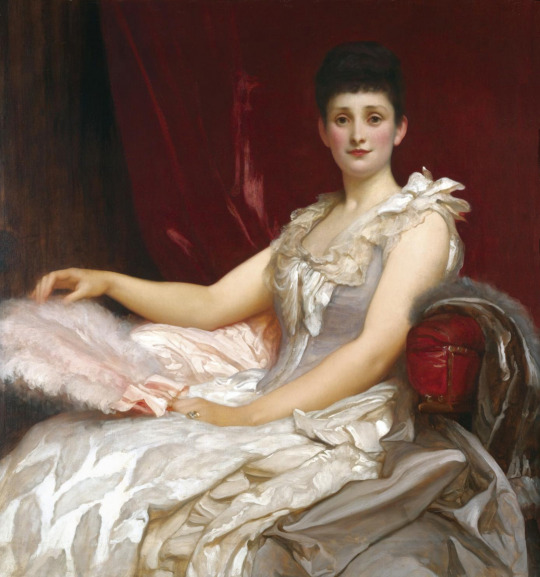
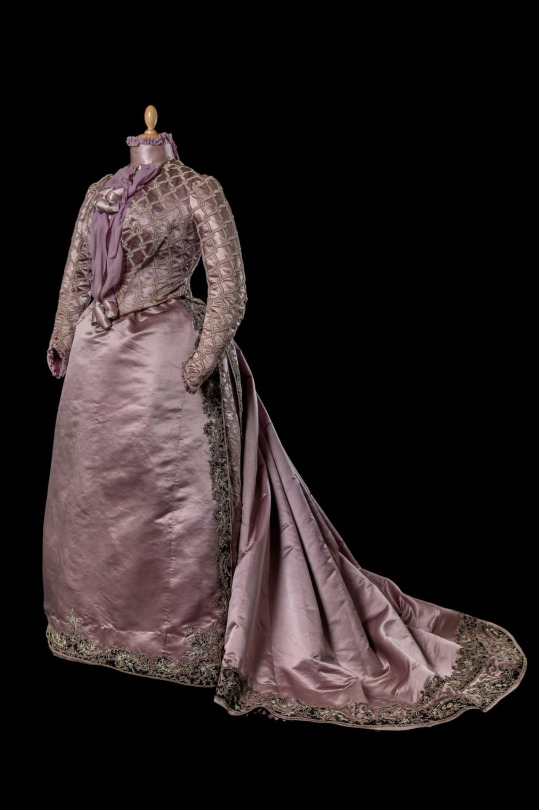
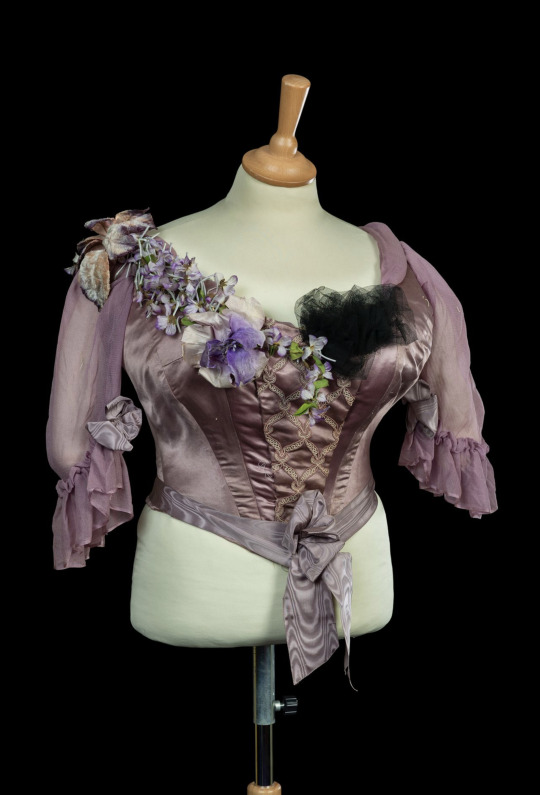

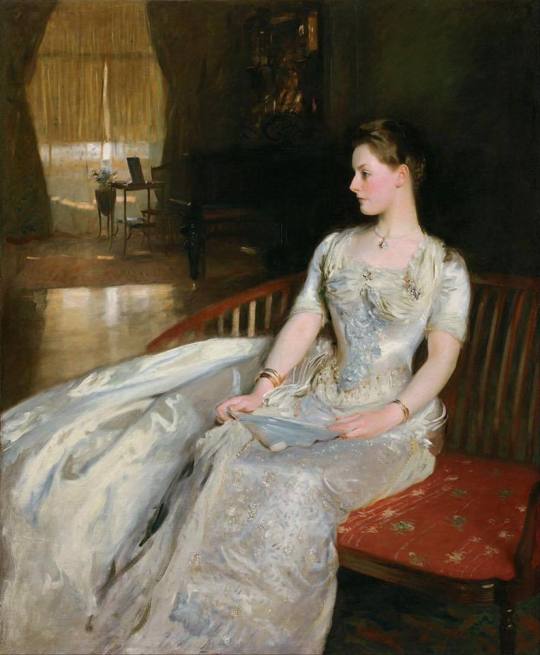

Later 1880s dress (from top to bottom) -
Amy Augusta, Lady Coleridge (née Lawford) by Frederic, Lord Leighton (location ?) From fripperiesandfobs.tumblr.com 1075X1149
ca. 1885 Robe à transformation en satin de soie lilas by Mme Courillon (Tessier-Sarou - 9Nov21 auction Lot 180). From their Web site1766X2652.
ca. 1885 Evening bodice of robe à transformation en satin de soie lilas by Mme Courillon (Tessier-Sarou - 9Nov21 auction Lot 180). From their Web site 1908X2808.
ca. 1885 Emile Pingat Dress with Dinner and Evening Bodices worn by Mrs. Charles Robeling (Philadelphia Museum of Art - Philadelphia, Pennsylvanis, USA). From their Web site 3066X4096.
1886 Mrs. Cecil Wade by John Singer Sargent (location ?). From tumblr.com/shewhoworshipscarlin 792X960.
1888 Louise Wagner by Hans Temple (Wien Museum Karlsplatz - Wien, Austria). From tumblr.com/history-of-fashion 1675X3072.
#1880s fashion#late Victorian fashion#bustle era fashion#Amy Augusta Lawford#Frederic Leighton#Mme Courillon#V neckline#V waistline#Emile Pingat#square neckline#close skirt#petticoat#train#Mrs. Cecil Wade#John Singer Sargent#fan#Louise Wagner#Hans Temple#bun#clerical neckline#jewelry
35 notes
·
View notes
Text

Grace Kelly, acedemy award winner, of Philadelphia, PA., waves on the bottom of the gangway after landing with Air France at Idlewild airport in New York, USA, May 18, 1955.
Grace Kelly, lauréate de l'Academy Award, de Philadelphie, Pennsylvanie, salue en bas de la passerelle après avoir atterri avec Air France à l'aéroport Idlewild de New York, États-Unis, le 18 mai 1955.
#grace kelly#sas princess grace#princesse grace#grimaldi#new york#air france#idlewild#may 1955#academy award winner
18 notes
·
View notes
Text

L'acteur Bruce Willis et son assistant Stephen J.Eads photographiés par Gilbert Carrasquillo, arrivent à la soirée Halloween du réalisateur M. Night Shyamalan, déguisés en jumelles de "Shining" à Philadelphie, Pennsylvanie le 28 octobre 2017
3 notes
·
View notes
Text
LÉGENDES DU JAZZ
LENA HORNE, CHANTEUSE, ACTRICE ET ACTIVISTE
Née le 30 juin 1917 à Bedford–Stuyvesant, près de Brooklyn, Lena Mary Calhoun Horne était la fille d’Edwin Fletcher "Teddy" Horne Jr. (1893–1970) et d’Edna Louise Scottron. L’arrière-grand-mère maternelle de Horne était originaire du Sénégal.
Le père de Horne était co-propriétaire du Belmont Hotel sur l’avenue Wylie avec son associé Gus Greenlee, un parieur et philanthrope. Joueur lui-même, le père de Lena avait abandonné sa famille alors qu’elle était âgée de trois ans. Après le départ de son père, Horne avait principalement été élevée par ses grand-parents, Cora Calhoun et Edwin Horne.
À l’âge de cinq ans, Horne était allée habiter avec sa mère en Georgie. Horne avait voyagé avec sa mère durant plusieurs années. Horne était âgée de douze ans lorsqu’elle était retournée à New York avec sa mère. À New York, Horne avait étudié à la St Peter Claver School de Brooklyn. Par la suite, elle avait fréquenté le Girls High School, une école publique pour filles à Brooklyn, mais elle avait abandonné ses études à l’âge de seize ans afin de venir en aide à sa mère.
De 1927 à 1929, Horne a vécu avec son oncle, Frank S. Horne, qui était doyen du Fort Valley Junior Industrial Institute (maintenant intégré à la Fort Valley State University). Plus tard, Frank avait été conseiller du président Franklin Delano Roosevelt.
À l’âge de dix-huit ans, Lena avait rejoint son père à Pittsburgh, en Pennsylvanie. À Pittsburgh, Horne avait habité dans le quartier de Little Harlem durant environ cinq ans. C’est là qu’elle avait appris la musique avec des musiciens originaires de Pittsburgh comme Billy Strayhorn et Billy Eckstine.
DÉBUTS DE CARRIÈRE
À l’automne 1933, Horne s’était jointe aux choristes du Cotton Club de New York. Au printemps suivant, Horne avait obtenu un rôle dans la revue Cotton Club Parade aux côtés de la chanteuse Adelaide Hall, qui était rapidement devenue son mentor. En 1935, Horne avait fait ses débuts au cinéma dans le court-métrage de Cab Calloway ''Jitterbug Party.’’ La même année, Horne s’était jointe à l’orchestre de Noble Sissle, avec lequel elle était partie en tournée et avait enregistré ses premiers disques sur étiquette Decca.
Après s’être séparée de son premier époux Louis Jordan Jones qu’elle avait épousé à l’âge de dix-neuf ans en 1937, Horne avait fait une tournée avec le groupe de Charlie Barnet en 1940-41 sous le nom de scène d’Helena Horne.
Horne, qui n’avait pas tellement apprécié la tournée, avait quitté le groupe pour aller travailler au Cafe Society de New York. Horne avait obtenu une des plus grandes chances de sa carrière lorsqu’elle avait remplacé Dinah Shore comme chanteuse vedette de la populaire série du réseau NBC The Chamber Music Society of Lower Basin Street. Les deux chefs d’orchestre résidents de l’émission, Henry Levine et Paul Laval, avaient enregistré avec Horne pour les disques RCA Victor en juin 1941. Horne avait quitté l’émission après six mois lorsqu’elle avait été recrutée par l’ancien gérant du Cafe Trocadero de Los Angeles, Felix Young, pour aller jouer dans une revue de style Cotton Club au Sunset Strip d’Hollywood. Après avoir été découverte par le producteur John Hammond, Horne s’était produite par la suite en solo à Carnegie Hall.
En 1946, Horne avait joué le rôle de Julie LaVerne dans la revue ‘’Till the Clouds Roll By’’, dans laquelle elle avait interprété la chanson "Can't Help Lovin' Dat Man". En janvier 1942, Horne avait également fait ses débuts dans la revue ‘’Little Troc’’ de Felix Young qui était présentée au Sunset Strip à Hollywood. En novembre 1944, Horne avait aussi été en vedette dans un épisode de la populaire série radiophonique ‘’Suspense’’ dans lequel elle incarnait une chanteuse de club fictive. En plus de chanter, Horne avait également eu d’importantes répliques comme actrice. En 1945-46, Horne avait aussi été chanteuse dans l’orchestre de Billy Eckstine.
À l’époque, Horne avait déjà joué dans deux films à petit budget: une comédie musicale intitulée ‘’The Duke is Tops’’ (1938) et ‘’Boogie Woogie Dream’’ (1941) mettant en vedette les pianistes Pete Johnson et Albert Ammons. Les chansons que Horne avait interprétées dans ce dernier film avaient plus tard été publiées sur disque. Horne avait décroché son premier rôle important au cinéma dans le film ‘’Panama Hattie’’ en 1942. L’année suivante, Horne avait interprété la chanson-titre du film ‘’Stormy Weather’’ qui était devenue son plus grand succcès en carrière. Le film était largement inspiré de la vie de son mentor Adelaide Hall.
Horne avait également fait des apparitions dans plusieurs comédies musicales de MGM, dont ‘’Cabin in the Sky’’ (1943), qui avait été tourné avec une distribution principalement afro-américaine. Horne n’avait cependant pas obtenu un rôle principal dans le film en raison de sa couleur, et aussi parce que la production devait être présentée dans des villes dont les cinémas refusaient de diffuser des films mettant en vedette des artistes de couleur. Une des scènes du film avait aussi été coupée avant sa présentation parce qu’elle avait été considérée trop suggestive par les censeurs (la scène montrait Horne en train d’interpréter la chanson "Ain't It the Truth" dans son bain). La scène et la chanson avaient été éventuellement reprises dans le film ‘’That’s Entertainment ! III’’ en 1994 qui comprenait aussi des commentaires de Horne dans lesquelles elle expliquait pourquoi la scène avait été coupée avant la publication du film. Horne avait également été la première personne de couleur à avoir été élue sur le bureau de direction de la Screen Actors Guild.
Dans le film ‘’Ziegfeld Follies’’ (1946), Horne avait interprété la chanson "Love" de Hugh Martin et Ralph Blane. En 1951, Horne avait présenté sa candidature pour jouer le rôle de Julie LaVerne dans la comédie musicale ‘’Show Boat’’, car elle avait déjà interprété le rôle dans le film ‘’Till the Clouds Roll By’’, mais on lui avait préféré Ava Gardner. Horne avait prétendu plus tard qu’on lui avait refusé le rôle en raison de l’interdiction des relations interraciales dans l’industrie du cinéma. Pour leur part, les dirigeants de MGM s’étaient défendus en déclarant que Horne n’avait jamais été sérieusement considérée pour le rôle. Ironiquement, les producteurs du film avaient demandé à Gardner de pratiquer les chansons en utilisant les enregistrements de Horne, ce qui avait insulté les deux actrices. Horne et Gardner étaient d’ailleurs de grandes amies. Éventuellement, la voix de Gardner avait été doublée par l’actrice Annette Warren Smith.
Découragée des rôles stéréotypés que lui offraient les producteurs d’Hollywood (et ce, même si une clause dans ses contrats prévoyait qu'on ne lui ferait jamais jouer des rôles de domestique) et plus particulièrement de l’attitude des studios MGM, Horne avait commencé à se concentrer sur sa carrière dans les clubs. Horne avait fait seulement deux apparitions majeures au cinéma dans les années 1950: d’abord dans le film ‘’Duchess of Idaho’’ (1950) aux côtés de l’actrice Eleanor Powell dont c’était le dernier rôle en carrière, puis dans la comédie musicale ‘’Meet Me in Las Vegas’’ (1956). Horne avait déclaré par la suite qu’elle en avait eu assez ‘’of being typecast as a Negro who stands against a pillar singing a song. I did that 20 times too often."
Mise sur une liste noire dans les années 1950 pour s’être impliquée dans des organisations appuyées par le Parti communiste, Horne avait éventuellement coupé tout lien avec ce dernier. Après avoir repris sa carrière au cinéma, Horne a joué le rôle de Claire Quintana, une tenancière de maison close, dans le film ‘’Death of a Gunfighter’’ (1969) aux côtés de Richard Widmark. C’était la première fois de la carrière de Horne qu’on lui offrait un rôle qui ne faisait aucune référence à la couleur de sa peau. Horne a fait deux dernières apparitions au cinéma dans les films ‘’The Wiz’’ (1978), qui était dirigé par son beau-fils Sidney Lumet, et ‘’That's Entertainment! III’’ (1994), une rétrospective dans laquelle elle avait témoigné de la façon disgracieuse dont elle avait été traitée par MGM.
Après avoir quitté Hollywood, Horne s’était établie comme une des principales chanteuses de l’après-guerre, se produisant dans les clubs et les hôtels tant aux États-Unis qu’au Canada et en Europe, plus particulièrement au Sands Hotel de Las Vegas, au Cocoanut Grove de Los Angeles et au Waldorf-Astoria de New York. En 1957, Horne a d’ailleurs publié un album live intitulé ‘’Lena Horne at the Waldorf-Astoria’’, qui était devenu l’album le plus vendu par une artiste féminine dans l’histoire des disques RCA. L’année suivante, Horne était aussi devenue la première Afro-Américaine à obtenir une nomination aux Tony Awards dans la catégorie de la meilleure actrice dans une comédie musicale pour son rôle dans la revue "Jamaica ". À la demande de Horne, la revue mettait également en vedette son amie de longue date et mentor Adelaide Hall. La performance de Horne lui avait mérité un Drama Critics’ Poll Award en 1958.
De la fin des années 1950 jusqu’aux années 1960, Horne était devenue une incontournable de plusieurs émissions de variétés à la télévision. Elle a fait de nombreuses apparitions dans des émissions comme le Perry Como's Kraft Music Hall, The Ed Sullivan Show, The Dean Martin Show, et The Bell Telephone Hour. Parmi les autres émissions auxquelles Horne avait collaboré, on remarquait The Judy Garland Show, The Hollywood Palace et The Andy Williams Show. En plus de deux spéciaux télévisés de la BBC, Horne a été en vedette en 1969 dans une émission spéciale de télévision aux États-Unis intitulée ‘’Monsanto Night Presents Lena Horne.’’ Durant la même décennie, l’artiste Pete Hawley avait peint le portrait de Horne dans une oeuvre qui reflétait le style de ses performances sur scène.
DERNIÈRES ANNÉES
En 1970, Horne a partagé la vedette avec Harry Belafonte dans un spécial d’une heure intitulé ‘’Harry & Lena’’ sur le réseau ABC. Trois ans plus tard, Horne avait également été en vedette dans un spécial avec le chanteur Tony Bennett intitulé ‘’Tony and Lena.’’ Horne et Bennett avaient fait par la suite une tournée aux États-Unis et au Royaume-Uni. Dans le cadre d’un hommage au compositeur Richard Rogers intitulé ‘’America Salutes Richard Rodgers’’ en 1976, Horne avait également interprété un medley des chansons de Rodgers aux côtés de Peggy Lee et Vic Damone. Horne avait aussi fait de nombreuses apparitions dans le cadre du Flip Wilson Show. Dans les années 1970, Horne avait également interprété son propre rôle sur des émissions de télévision comme The Muppet Show, Sesame Street et Sanford and Son. En 1985, Horne a aussi été en vedette sur The Cosby Show. En 1993, Horne avait également fait une apparition sur l’émission A Different World. À l’été 1980, à l’âge de soixante-trois ans, Horne, qui se préparait à prendre sa retraite du showbusiness, avait présenté une série de concerts bénéfice d’une durée de deux mois. La tournée était commanditée par la compagnie Delta Sigma Theta. Même si ces concerts avaient été publicisés comme la tournée d’adieu de Horne, sa retraite avait duré moins d’un an.
Le 13 avril 1980, Horne, Luciano Pavarotti et l’animateur Gene Kelly devaient faire une apparition dans un gala de la Metropolitan Opera House qui avait pour but de rendre hommage à la Joffrey Ballet Company. Malheureusement, l’avion de Pavarotti était en retard et le chanteur n’avait pu se présenter. James Nederlander, qui était l’invité d’honneur du gala, avait plus tard déclaré que seulement trois spectateurs avaient exigé d’être remboursés. Après la performance de Horne, Nederlander avait demandé à lui être présenté. En mai 1981, la Nederlander Organization, Michael Frazier et Fred Walker avaient engagé Horne pour participer à un contrat de quatre semaines au nouveau Nederlander Theatre situé sur la 41e rue Ouest de New York. L’événement, qui avait remporté un succès immédiat, avait finalement été prolongé pendant un an et avait valu à Horne un Tony Award spécial ainsi que deux prix Grammy pour l’enregistrement de son concert intitulé ‘’Lena Horne: The Lady and Her Music.’’
Horne avait présenté le concert à 333 reprises. L'événement s’était terminé le jour-même du 65e anniversaire de Horne, le 30 juin 1982. Plus tard la même semaine, Horne avait de nouveau présenté le concert dans le cadre d’un enregistrement pour la télévision et sa publication sur vidéo. Quelques jours plus tard, Horne avait inauguré une tournée à Tanglewood au Massachusetts qui lui avait fait parcourir quarante et une villes aux États-Unis et au Canada jusqu’au 4 juillet 1982. Horne s’était par la suite produite à Londres durant un mois. La tournée avait pris fin à Stockholm, en Suède, le 14 septembre 1984. Malgré l’énorme succès remporté par la tournée (Horne détient toujours le record pour la plus longue performance en solo à Broadway), la chanteuse avait décidé de ne pas profiter du regain d’intérêt pour sa carrière et de ne pas se lancer dans de nouveaux projets. Un enregistrement avec Frank Sinatra qui devait être produit par Quincy Jones en 1983 avait même été abandonné. Le seul enregistrement de Horne durant cette décennie avait été l’album de 1988 ‘’The Men in My Life’’, qui comprenait des duos avec Sammy Davis Jr. et Joe Williams. L’année suivante, la carrière de Horne avait été couronnée par la remise d’un Grammy Lifetime Achievement Award. En 1984, le Kennedy Center avait également décerné un prix à Horne pour souligner sa contribution dans le domaine des arts.
En 1995, un album live reproduisant la performance de Horne au Supper Club a été publié. L’album s’était éventuellement mérité un prix Grammy dans la catégorie du meilleur disque de jazz vocal. En 1998, Horne a publié un autre album studio intitulé ‘’Being Myself.’’ Après la publication de l’album, Horne s’est retirée de la scène. Elle a fait de rares apparitions publiques jusqu’en 2000, alors qu’elle a collaboré à un album-hommage de Simon Rattle intitulé ‘’Classic Ellington.’’
L’ACTIVISTE
Impliquée depuis longtemps dans le mouvement des droits civiques, Horne a chanté au Café Society, le premier club multi-racial de New York. Elle a aussi travaillé avec Paul Robeson. Alors qu’elle assurait le divertissement des troupes dans le cadre de la Seconde Guerre mondiale, Horne avait catégoriquement refusé de se produire devant des auditoires où prévalait la ségrégation. L’armée américaine refusant d’autoriser les auditoires multi-raciaux, Horne avait présenté son spectacle devant une assistance mixte composée de soldats de couleur et de prisonniers allemands. Après s’être aperçue que les soldats noirs étaient forcés de s’asseoir à l’arrière, Horne était descendue de scène pour se rendre jusqu’aux sièges où les soldats de couleur étaient assis. Après avoir cessé de se produire devant les soldats en 1945, Horne a financé de sa poche des tournées des camps militaires.
Durant le weekend précédant l’assassinat du militant des droits civiques Medgar Evers en 1963, Horne avait participé à un ralliement de la National Association for the Advancement of Colored People (NAACP) à Jackson, au Mississippi. Lors de la Marche sur Washington la même année, Horne avait prononcé un discours et s’était produite à la demande de la NAACP, du Student Non Violent Committee (S.N.C.C. ) et du National Council of Negro Women. Horne avait également collaboré avec Eleanor Roosevelt dans une tentative visant à faire adopter des lois anti-lynchage. L’auteur-compositeur Tom Lehrer avait d’ailleurs mentionné Horne dans sa chanson "National Brotherhood Week" dans laquelle il avait dénoncé le Sheriff Jim Clark, qui avait été responsable de la répression des marcheurs lors de la manifestation de Selma, en Alabama, en 1965. En 1983, la NAACP a honoré Horne en lui décernant la Spingarn Medal.
Deux jours avant l’assassinat du président John F. Kennedy, Horne lui avait rendu visite à la Maison-Blanche le 20 novembre 1963. Participaient également à la visite le président du Democratic National Committee (D.N.C.) John Bailey, la vice-présidente Margaret B. Price, la secrétaire Carol Lawrence, Richard Adler et Sidney Salomon.
VIE FAMILIALE ET DÉCÈS
En janvier 1937, Horne a épousé à Pittsburgh Louis Jordan Jones, un homme politique. Le 21 décembre 1937, Horne a donné naissance à une fille Gail, une future écrivaine qui s’était fait connaître plus tard sous le nom de plume de Gail Lumet Buckley. En 1940, le couple avait aussi eu un fils, Edwin Jones, qui est mort d’une maladie des reins en 1970. Après s’être séparé en 1940, Horne et Jones avaient divorcé en 1944. Horne s’était remariée par la suite à Lennie Hayton, un directeur musical qui avait été un des premiers chefs d’orchestre et arrangeur des studios MGM à Paris en 1947. Le couple s’est séparé au début des années 1960, mais n’avait jamais divorcé. Hayton est décédé en 1971. Dans son autobiographie écrite en collaboration avec Richard Schickel, Horne a raconté les énormes pressions auxquelles elle et Hayton avaient dû faire face comme couple interracial. Même si Horne avait reconnu en mai 1980 dans une entrevue accordée au magazine Ebony qu’elle avait épousé Hayton afin de faire avancer sa carrière et de briser la barrière raciale, elle avait tenu à préciser qu’elle avait appris à l’aimer progressivement. Horne a aussi eu des liaisons avec le champion poids-lourd Jos Louis, le chef d’orchestre et clarinettiste Artie Shaw, l’acteur Orson Welles et le réalisateur Vincente Minnelli. Horne avait également eu une longue relation avec le musicien et arrangeur Billy Strayhorn qui étai.t rapidement devenu un de ses mentors. Strayhorn, qui était homosexuel, avait déclaré qu’il aurait épousé Horne s’il avait eu une orientation sexuelle différente.
La scénariste Jenny Lumet, qui avait remporté un Oscar pour le scénario du film ‘’Rachel Getting Married’’ (2008), était la petite-fille de Horne. Lumet était la fille du réalisateur Sidney Lumet et de la fille de Horne, Gail. Parmi les autres petits-enfants de Horne, on remarquait l’autre fille de Gail, Amy, et les quatre enfants de son fils Edwin: Thomas, William, Samadhi et Lena. Horne avait aussi des arrière-petits-enfants, dont l’acteur Jake Cannavale.
Catholique, Horne a habité à St. Albans, dans le Queens, de 1946 à 1962. À St. Albans, Horne avait comme voisins des sommités du jazz com àme Count Count Basie et Ella Fitzgerald. Dans les années 1980, Horne s’est installée au cinquième étage du Volney, un hôtel transformé en coopérative de logements, qui était situé sur la 74e rue.
Lena Horne est morte d’une crise cardiaque le 9 mai 2010. Elle était âgée de quatre-vingt-douze ans. Horne a été inhumée à la St. Ignatius Loyola Church à New York. Des milliers de personnes ont assisté à ses funérailles, dont Leontyne Price, Dionne Warwick, Liza Minnelli, Jessye Norman, Chita Rivera, Cicely Tyson, Diahann Carroll, Leslie Uggams, Lauren Bacall, Robert Osborne, Audra McDonald, et Vanessa Williams. Horne a été incinérée.
De nombreux artistes ont rendu hommage à Horne. En 2003, le réseau ABC avait annoncé que Janet Jackson interpréterait le rôle de Horne dans un film tourné pour la télévision. À la suite de l’incident qui s’était produit lors du spectacle de la mi-temps du Super Bowl de 2004, le magazine Variety avait rapporté que Horne avait demandé que Jackson soit retirée du projet. Même si les dirigeants du réseau ABC avaient manifesté des réticences à accéder à la requête de Horne, les représentants de Jackson avaient déclaré que la chanteuse avait décidé de respecter la demande de Horne. Au cours d’une entrevue avec la chanteuse Alicia Keys en 2005 dans le cadre de son talk show, l’animatrice Oprah Winfrey avait indiqué qu’elle projetait de produire le film elle-même, avec Keys dans le rôle de Horne.
Le 24 janvier 2006, les disques Blue Note, qui avaient produit les disques de Horne durant plus d’une décennie, avaient publié de nouvelles versions des chansons de la chanteuse. L’album intitulé ‘’Seasons of a Life’’, comprenait notamment les chansons "Something to Live For", "Chelsea Bridge" et "Stormy Weather". En 2009, le personnage de Horne a été incarné par Leslie Uggam et Nikki Crawford dans une nouvelle version de la comédie musicale Stormy Weather, qui a été présentée à la Pasadena Playhouse en Californie de janvier à mars 2009. En 2011, l’actrice Ryan Jillian a également joué le rôle de Horne dans son one-woman show intitulé ‘’Notes from A Horne.’’ Le spectacle a été présenté au Susan Batson studio de New York, de novembre 2011 à février 2012. L’actrice Halle Berry a aussi rendu hommage à Horne dans le cadre des 83e Academy Awards le 27 février 2011. En 2018, le Service postal des États-Unis a également émis un timbre en l’honneur de Horne, qui était devenue la 41e personne à être honorée dans le cadre de la série Black Heritage.
En juin 2021, le Prospect Park Bandshell de Brooklyn a été rebaptisé le Lena Horne Bandshell. En juin 2022, la Nederlander Organization avait également annoncé que le Brooks Atkinson Theatre de Broadway serait renommé le Lena Horne Theatre en l’honneur de Horne, qui devenait ainsi la première femme de couleur à avoir un théâtre de Broadway nommé en son honneur.
Artiste très charismatique, Horne avait été une des chanteuses les plus remarquables de son époque. Femme de conviction, un peu comme son amie la pianiste Hazel Scott, Horne n’avait pas hésité à risquer sa carrière pour défendre ses idées, notamment dans le cadre du mouvement des droits civiques.
©-2024, tous droits réservés, Les Productions de l’Imaginaire historique
SOURCES:
‘’Lena Horne.’’ Wikipedia, 2024.
‘’Lena Horne, American singer and actress.’’ Encyclopaedia Britannica, 2024.
‘’Lena Horne, American singer and actress.’’ Condé Nast, 2024.
‘’Lena Horne Biography.’’ Biography.com, 26 mars 2021é
2 notes
·
View notes